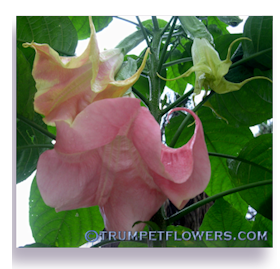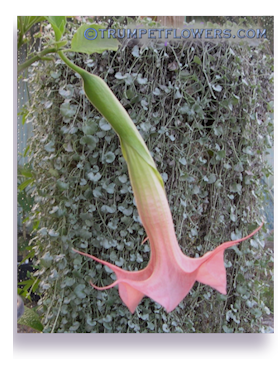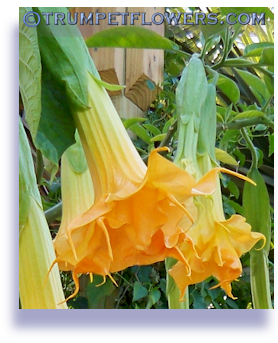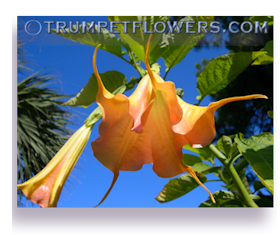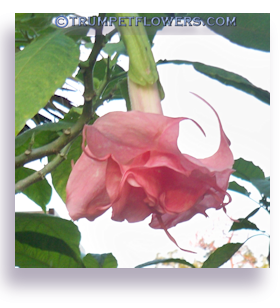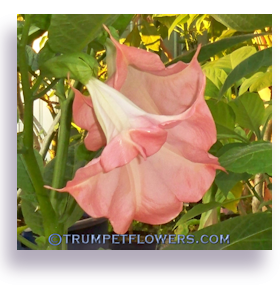Acalypha
Pronounced 'ak-ah-LY-fah', this lovely leaved plant has reached new heights in my garden. I have an Acalypha wilkesiana 'Hoffmannii' that is over ten feet tall and still going strong.
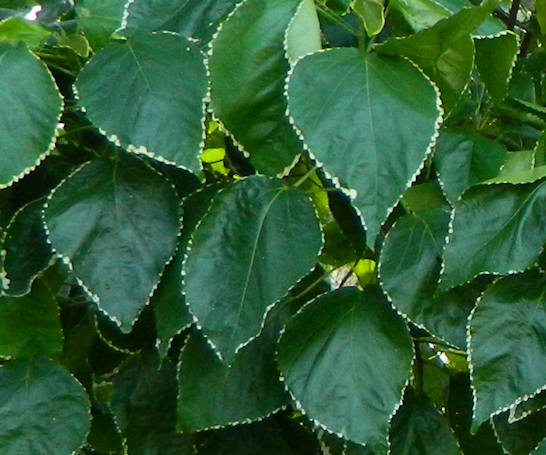
When I was a kid, my mother grew this plant as a houseplant. It sat for years in a 1 gallon pot, growing very little but always lovely. I had no idea until I moved to Florida how magnificent (and large) this plant could truly be.
On a few rare occassions, we get kissed by a light frost, and the top of the Acalypha is damaged. But in spring it bounces right back, all the stem growth recovers and leaves re-appear. By summertime those same leaves are twice the size of a large man's hand. A towering green and white giant that draws attention from all passerbys.
Another acalypha grows about a hundred feet away, and is the more commonly seen variety. The Copper Leaf acalypha is also admired for it's leaves, with the showy streaks of copper, burnished bronze, greens and pinks to reds all displayed on just one leaf. A spectacular plant that grow in excess of 15 feet high in one's garden, mine is still yet a baby and only about 3 feet tall. Still, it is a shining jewel worth beholding.
Care of acalypha is relatively simple, but there are a few things to watch out for. In cool and humid weather, the threat of downy mildew becomes an issue worth addressing. The late winter of 2012 brought this unwanted fungus my way, and it attacked the copperleaf first, a week later this airborne plaque had reached our acalypha wilkesiana hoffmannii. It was terrible to see these once elegant shrubs struggling to get by.
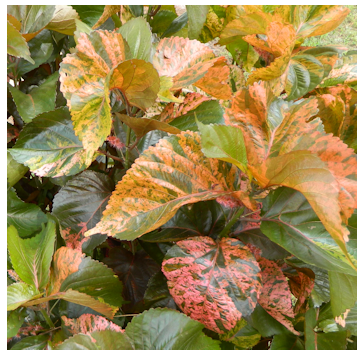 I made up a home-made batch of copper fungicide and sprayed both the top and bottom leaves. Within a month the plants were flourishing again, and no sign of the disease is visible today. The affected acalyphas will forever harbor this fungus however, but diligence with copper fungicide spraying will keep it at bay. This photo shows the Acalypha Macafeena, or Copper leaf bush, Jacob's Coat, fully recovered.
I made up a home-made batch of copper fungicide and sprayed both the top and bottom leaves. Within a month the plants were flourishing again, and no sign of the disease is visible today. The affected acalyphas will forever harbor this fungus however, but diligence with copper fungicide spraying will keep it at bay. This photo shows the Acalypha Macafeena, or Copper leaf bush, Jacob's Coat, fully recovered.
Acalypha will thrive with exposure to morning sun, and dappled afternoon sun. Having no taproot, it takes them a few years to fully establish roots deep enough to go without some watering routine, so make sure young ones receive the benefit of a sprinkler system. If you live in agricultural zones 9 and lower numbered, you will have to bring the plants inside come winter. Continue watering at a lesser rate, giving it exposure to southern sun when indoors. Fertilize, but with a weakened soultion at this time. It will allow the plant to rest slightly until spring.
Pests such as whiteflies and aphids can be a hassle in wintering over an acalphya, as I watched my mother fight them almost every winter. Safe sprays such as Neem have a lemony fragrance and will help keep down the numbers of these pests if sprayed often. Good air circulation also helps. Protect the plants leaves from drying out in heated indoor air by placing the pots on trays full of pebbles and water. Use a misting bottle on the leaves once a day, and don't place the plant near a radiator or other heat source that will dry it out.
Mites can also threaten to eat your beloved acalyphas, so be on the lookout. Spider mites like dry conditions, with little air flow. Counteract this by keeping the plant in a well air circulated area, and make sure it does not dry out too much. If mites still find yours, try using Forbid. Brugmansia Growers International sometimes carries it in the link I provided.
Make sure your acalypha receives a balanced fertilizer with micronutrients, such as Earth Juice Microblast. If yours are in the ground, as mine are, I instead use a standard Palm and Citrus time released fertilizer over the course of spring through summer. A few yellowing leaves in late fall to winter here signal it is time to lay off the fertilizer and allow the plant to rest. This is also the time to begin watching for fungal and viral problems, at least in Southern Florida.
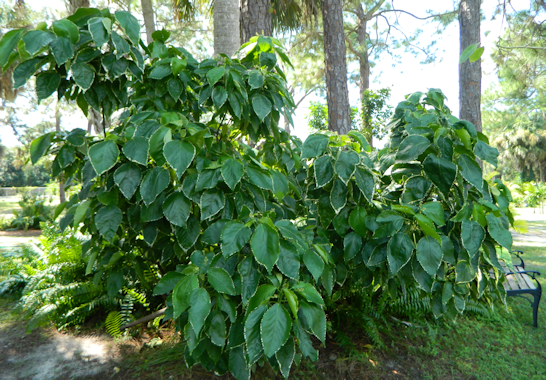
Said to originate from the Fiji islands, my looming large acalypha wilkesiana is well over 20 years old. Rich, loam filled soil with sharp sand for good drainage will cause faster growth, and bigger leaves. Though not many plants have been said to do well around pine trees, the acalypha wilkesiana hoffmannii is growing very well amongst them.
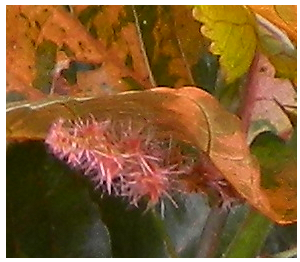 Acalphya produce flower spikes that are sometimes quite exaggerated. Colors range from white to pink to red, even yellow. Some are very long and resemble an animal's furry tail, while others are less noticeable. Male and female flowers are on separate spikes, but bees will pollinate them and seeds will follow. Acalypha is cultivated for either the showy leaves or the flower spikes, or both.
Acalphya produce flower spikes that are sometimes quite exaggerated. Colors range from white to pink to red, even yellow. Some are very long and resemble an animal's furry tail, while others are less noticeable. Male and female flowers are on separate spikes, but bees will pollinate them and seeds will follow. Acalypha is cultivated for either the showy leaves or the flower spikes, or both.
Acalypha can be propagated through cuttings, root division, and seeds. Bottom heat is helpful if you are attemtping to propagate them through cuttings.
Acalypha are in the Euphorbiaceae family, and genus acalypha. They all orginated from the South Pacific Islands, where the warm, tropical jungles protect them with towering canopy trees. There are over 430 known species in their genus.
Scientific studies done on the species acalphya wilkesiana have shown good activities of some liver function enzymes and body weight reduction of rabbits. Here is more on that: Pakistan Journal of Nutrition. It is an interesting read if you're into science and nutrition of natural plants.
Tags: care and grow acalypha, acalypha wilkesiana hoffmannii, acalypha macafeena, Copper Leaf, Jacobs Coat, Copper plant, copper leaf, gardening, gardening blog, Care and grow Acalypha
